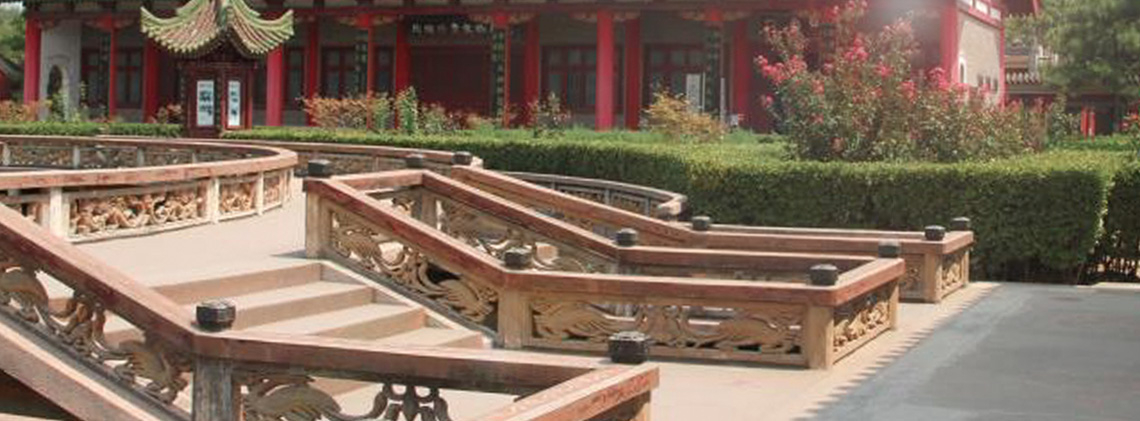
Han and Tang Imperial Mausoleums
Splendid
Chi Culture
Topic
Han and Tang Imperial Mausoleums
Thirteen Chinese dynasties established their capitals in today’s Xi’an, Shaanxi province, leaving behind more than seventy imperial mausoleums as well as a large number of attendant or satellite tombs for lesser nobility. This is aptly expressed by the folk ballad: “Wits abound in Jiangnan (south of Yangtze), strong men abound in Shandong; / But emperors abound underneath the loess of Shaanxi.”
The reason there are so many imperial tombs in Xi’an (formerly Chang’an) is because two of China’s most long-lived and flourishing dynasties, the Han (206 BCE–220 CE) and the Tang (618–907), established their capitals there. A total of eleven imperial mausoleums of the Han and eighteen of the Tang are located just outside today’s modern city. They are mainly distributed in the Guanzhong Plain, north of the Wei River, stretching more than a hundred kilometers east to west.
Chinese emperors attached great importance to preparations for the afterlife, and the construction of their mausoleums was one of the most important state projects to accomplish. The construction, generally presided over by imperial kinsmen or senior officials, used the best architects, rites experts, geomancers, and artisans in the land. As such, imperial mausoleums are important indicators of the highest economic and cultural development of their respective historical eras.
Lavish funerals and burials were in vogue during the Han dynasty. In accordance with the prevailing institutional system, the construction of the emperor’s tomb started in the second year of his reign with a budget equal to one-third of the national tax revenue. The construction team was charged with building a mausoleum with structures that recreated real-life imperial buildings, palaces, and courtyards for the enjoyment of the ruler in the afterlife. Most imperial tombs of the Han period are of the horizontal type, with side chambers, front and rear chambers, as well as other chambers. On the subterranean walls were murals depicting scenes from the life of the emperor, as well as portrayals of heavenly deities, sacred animals, legends, and historical tales.
Following the Qin (221–206 BCE) and Han dynasties, the construction of imperial mausoleums declined but climaxed again during the Tang dynasty, which during its 290-year temporal span was ruled by a total of twenty emperors and one empress (Wu Zetian). Eighteen of the twenty emperors are interred in the valley to the north of Xi’an, known as the “eighteen tombs of Tang.”
The Zhaoling mausoleum, built into the side of a mountain, is the final resting place of Emperor Taizong (Li Shimin, 599–649), one of the most accomplished rulers in Chinese history. In addition to being venerated as co-founder of the Tang dynasty, Taizong’s burial complex has more surface structures and looks more imposing than the simple tomb mounds of previous Chinese monarchs. This precedent inspired all later Tang emperors also to build grand mausoleums for their afterlife. The Zhaoling mausoleum is situated on Mount Jiuzong near Liquan county, northeast of Xi’an in Shaanxi province. It is not only the largest imperial mausoleum in scale but also has the most satellite tombs of any imperial burial site in China. It is regarded as a culmination of brilliant design and perfect execution, thanks to the unprecedented dynastic growth and strength of the time coupled with 107 long years of fine construction work. With over 180 satellite tombs, the Zhaoling complex is 60 kilometers in circumstance and occupies an area of over 200 square kilometers. Taizong was victorious in many military campaigns, and he had the six beloved steeds he rode into battle immortalized on reliefs that decorated the walls of the eastern and western verandas of the above-ground sacrificial altar chamber leading to the north gate and spirit path of the tomb. The stone bas-reliefs were modelled on a famous painting of the six war horses by Yan Liben (ca. 600–673), a painter in Taizong’s court. Today, two of the “Six Steeds of Zhaoling” are at the Penn Museum of the University of Pennsylvania, and the other four panels are preserved in the Xi’an Beilin (Stele Forest) Museum.
Wu Zetian (624–705) of the Tang dynasty was the only female monarch in Chinese history who ruled in her own right. She stepped down as ruler before death and resumed her former status as empress consort. Therefore, she did not have her own mausoleum but was interred with her husband, Emperor Gaozong (Li Zhi, 628–683). The joint mausoleum, known as Qianling, is the only one in the world where two separately reigning rulers, husband and wife, are buried. A pair of steles are erected outside the south gate of the mausoleum, one of which is the Shushengji Stele, commemorating the achievements of Emperor Gaozong, and the other is the “Stele With No Characters,” which bore no inscription. This stele was deliberately left blank because Wu Zetian wanted her legacy to be evaluated by history.



